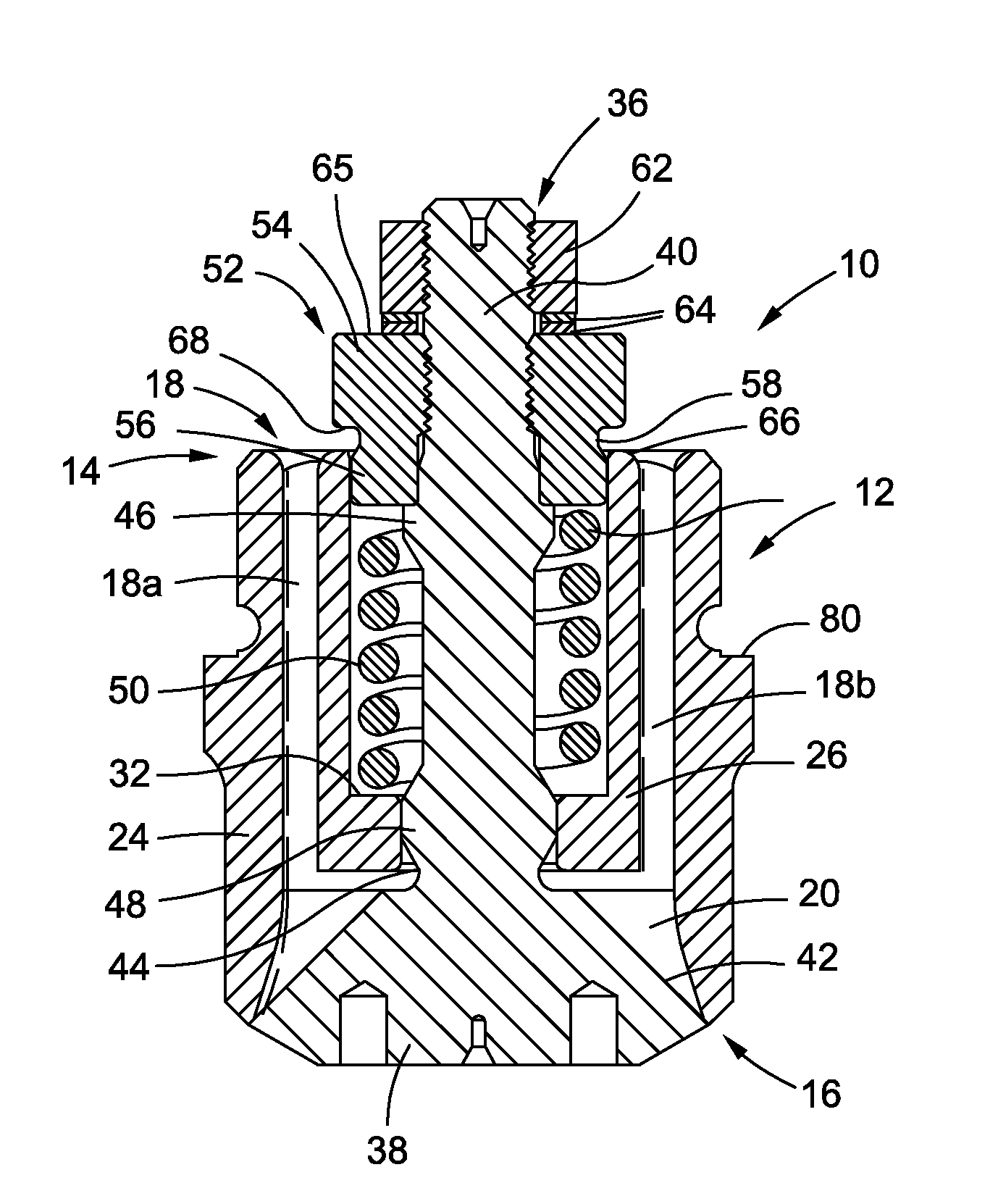Nozzle design for high temperature attemperators
a technology of high-temperature attemperators and nozzle assemblies, which is applied in the direction of lighting and heating apparatus, heating types, and separation processes, etc., can solve the problems of affecting the operation of the attemperator, the inability of the nozzle assembly of the attemperator to remain leak-tight, and the addition of unwanted water to the steam line or pip
- Summary
- Abstract
- Description
- Claims
- Application Information
AI Technical Summary
Benefits of technology
Problems solved by technology
Method used
Image
Examples
Embodiment Construction
[0030]Referring now to the drawings wherein the showings are for purposes of illustrating a preferred embodiment of the present invention only, and not for purposes of limiting the same, FIGS. 1-6 depict a nozzle assembly 10 constructed in accordance with a present invention. In FIGS. 1, 2 and 5, the nozzle assembly 10 is shown in a closed position which will be described in more detail below. Conversely, in FIGS. 3, 4 and 6, the nozzle assembly 10 is shown in an open position which will also be described in more detail below. As indicated above, the nozzle assembly 10 is adapted for integration into a desuperheating device such as, but not necessarily limited to, a probe type attemperator. As will be recognized by those of ordinary skill in the art, the nozzle assembly 10 of present invention may be integrated into any one of a wide variety of different desuperheating devices or attemperators without departing from the spirit and scope of the present invention.
[0031]The nozzle asse...
PUM
| Property | Measurement | Unit |
|---|---|---|
| diameter | aaaaa | aaaaa |
| temperature | aaaaa | aaaaa |
| saturation temperature | aaaaa | aaaaa |
Abstract
Description
Claims
Application Information
 Login to View More
Login to View More - R&D
- Intellectual Property
- Life Sciences
- Materials
- Tech Scout
- Unparalleled Data Quality
- Higher Quality Content
- 60% Fewer Hallucinations
Browse by: Latest US Patents, China's latest patents, Technical Efficacy Thesaurus, Application Domain, Technology Topic, Popular Technical Reports.
© 2025 PatSnap. All rights reserved.Legal|Privacy policy|Modern Slavery Act Transparency Statement|Sitemap|About US| Contact US: help@patsnap.com



